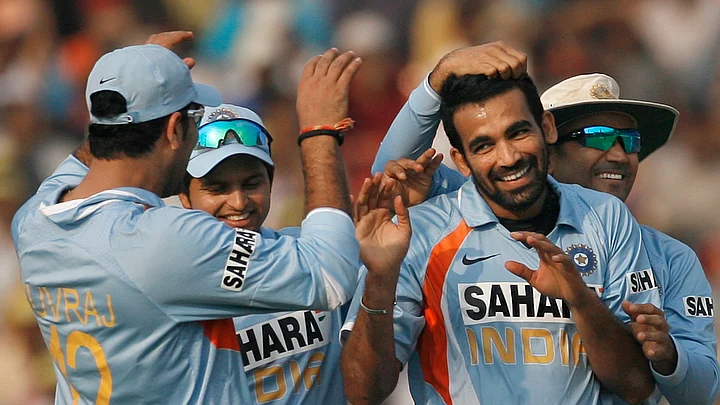India’s pace spearhead for almost a decade, Zaheer Khan walked into the sunset on 15 October 2015, bidding farewell to his international cricket career.
While he promised to give his fans one last chance of seeing him in action in next year’s IPL, his announcement ignited a debate on the legacy of Zaheer Khan in Indian cricket.
Without doubt the 38-year-old is the best Indian fast bowler ever, simply because of the impact he had on Indian cricket with his bowling.
The Three Phases of His Career
Zaheer’s career can be split into three parts: first, after he made his debut in 2000, second when he made a return in dramatic style in 2006-07 and finally his post injury return in 2013-14. In these three phases of Zaheer’s career lies the story of Indian cricket’s resurgence in the 21st century.
When he first started out, Zaheer was a breath of fresh air, especially because of his left-arm pace and swing. He matched the aggressive approach of the then captain Sourav Ganguly and they worked wonders as a combination.
Instant Impact
Indian cricket waded its way through some tough times in the early 2000s on the back of some outstanding bowling by Zaheer supported by the spin pair of Anil Kumble and Harbhajan Singh. It all came together beautifully at the 2003 World Cup when India assembled probably its best attack ever with an ageing Javagal Srinath leading the pack.
Zaheer was then clearly the marked man to lead India forward in the years to come following Srinath.
Change of Guard
A change in captaincy in 2005 meant that Zaheer could not really get along with Rahul Dravid and spent a lot of time away from the team in 2006 in that tumultuous phase. The break did him wonders as he returned with renewed vigour after a county stint, to lead India to a famous Test series win in England in 2007. It was in this phase again that he emerged as a mentor to younger bowlers like Ishant Sharma and became the best in the world.
By this time he was a bowler who thought the batsmen out with his skill and compensated for the loss of pace. It was hardly a surprise that Zaheer emerged as the bowler with most wickets at the 2011 World Cup, which was also the crowning glory of his career.
The Final Phase
Then started the downward spiral of Indian cricket and interestingly it coincided with the day Zaheer broke down at Lord’s to signal the end of an outstanding phase away from home. By the time he returned following a lengthy injury layoff in the 2013-14 season he was a shadow of his former self. He was now an on-field mentor at mid-on and mid-off. But his return was too good to last.
Zaheer’s dream was to play the 2015 World Cup, but it was too much of an ask and when he struggled to play the first half of this year’s IPL, the writing was on the wall.
Best-ever Without a Doubt
Overall, Zaheer had a greater impact on Indian cricket than his two illustrious predecessors Kapil Dev and Javagal Srinath. Zaheer played a part in delivering results, mentoring fast bowlers and generally was always the leader of the pack. While Kapil lacked support, Srinath had just Kumble for help. Zaheer manufactured a bowling attack with his skill and left an indelible mark.
No wonder Zaheer was India’s best-ever fast bowler, as also the best left-armer in the world after Wasim Akram.
(This article has been published from The Quint’s archives on the occasion of Zaheer Khan’s appointment as India’s bowling coach. It was first published on 16 October 2015 when he had retired.)
(At The Quint, we question everything. Play an active role in shaping our journalism by becoming a member today.)
